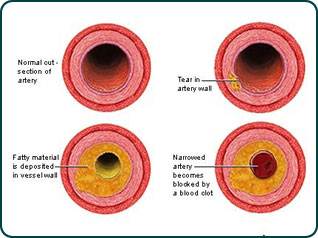
Smart Substitutions for Healthy Cooking
Smart Substitutions for Recipes
 | You can make many of your favorite recipes healthier by using lower-fat or no-fat ingredients. These healthy substitutions can help you cut down on saturated fats, trans fats and cholesterol, while noticing little, if any, difference in taste. |
When recipe calls for . . .
|
Use this instead …
|
Whole milk (1 cup)
|
1 cup fat-free or low-fat milk, plus one tablespoon of liquid vegetable oil
|
Heavy cream (1 cup)
|
1 cup evaporated skim milk or 1/2 cup low-fat yogurt and 1/2 cup plain low-fat unsalted cottage cheese
|
Sour cream
|
Low-fat unsalted cottage cheese plus low-fat or fat-free yogurt; or just use fat-free sour cream
|
Cream cheese
|
4 tablespoons soft margarine (low in saturated fat and 0 grams trans fat) blended with 1 cup dry, unsalted low-fat cottage cheese; add a small amount of fat-free milk if needed
|
Butter (1 tablespoon)
|
1 tablespoon soft margarine (low in saturated fat and 0 grams trans fat) or 3/4 tablespoon liquid vegetable oil
|
Egg (1)
|
2 egg whites; or choose a commercially made, cholesterol-free egg substitute (1/4 cup)
|
Unsweetened baking chocolate (1 ounce)
|
3 tablespoons unsweetened cocoa powder or carob powder plus 1 tablespoon vegetable oil or soft margarine; since carob is sweeter than cocoa, reduce the sugar in the recipe by 25%
|
Smart Substitutions for Snacks
 | You can snack healthier by substituting snacks that are high in saturated fats and/or trans fats with these sensible snacks: |
Instead of . . .
|
Enjoy …
|
Fried tortilla chips
|
Baked tortilla chips (reduced sodium version)
|
Regular potato or corn chips
|
Pretzels or low-fat potato chips (reduced sodium version)
|
High-fat cookies and crackers
|
Fat-free or low-fat cookies, crackers (such as graham crackers, rice cakes, fig and other fruit bars, ginger snaps and molasses cookies)
|
Regular baked goods
|
Baked goods, such as cookies, cakes and pies, and pie crusts made with unsaturated oil or soft margarines, egg whites or egg substitutes, and fat-free milk
|
Devil’s food cake
|
Angel food cake
|
Ice cream bars
|
Frozen fruit bars
|
Pudding made with whole milk
|
Pudding made with fat-free or low-fat milk
|
Ice cream
|
Sherbet, ice milk or frozen, fat-free or low-fat yogurt
|
Doughnut
|
Bagel or toast
|
Original article and more substitutions for restaurants and fast food items can be found here.


 Friday, February 15, 2013 At 7:59PM
Friday, February 15, 2013 At 7:59PM





